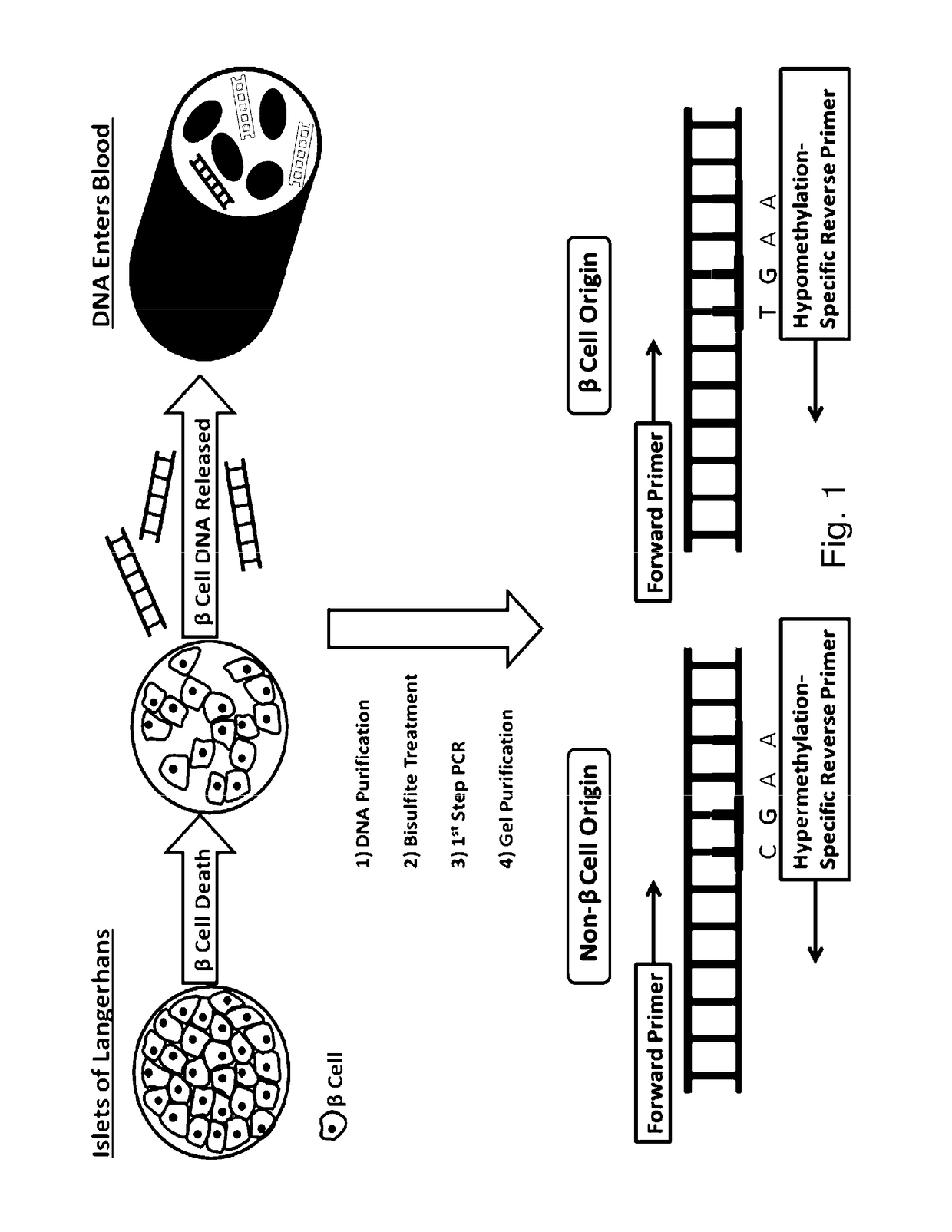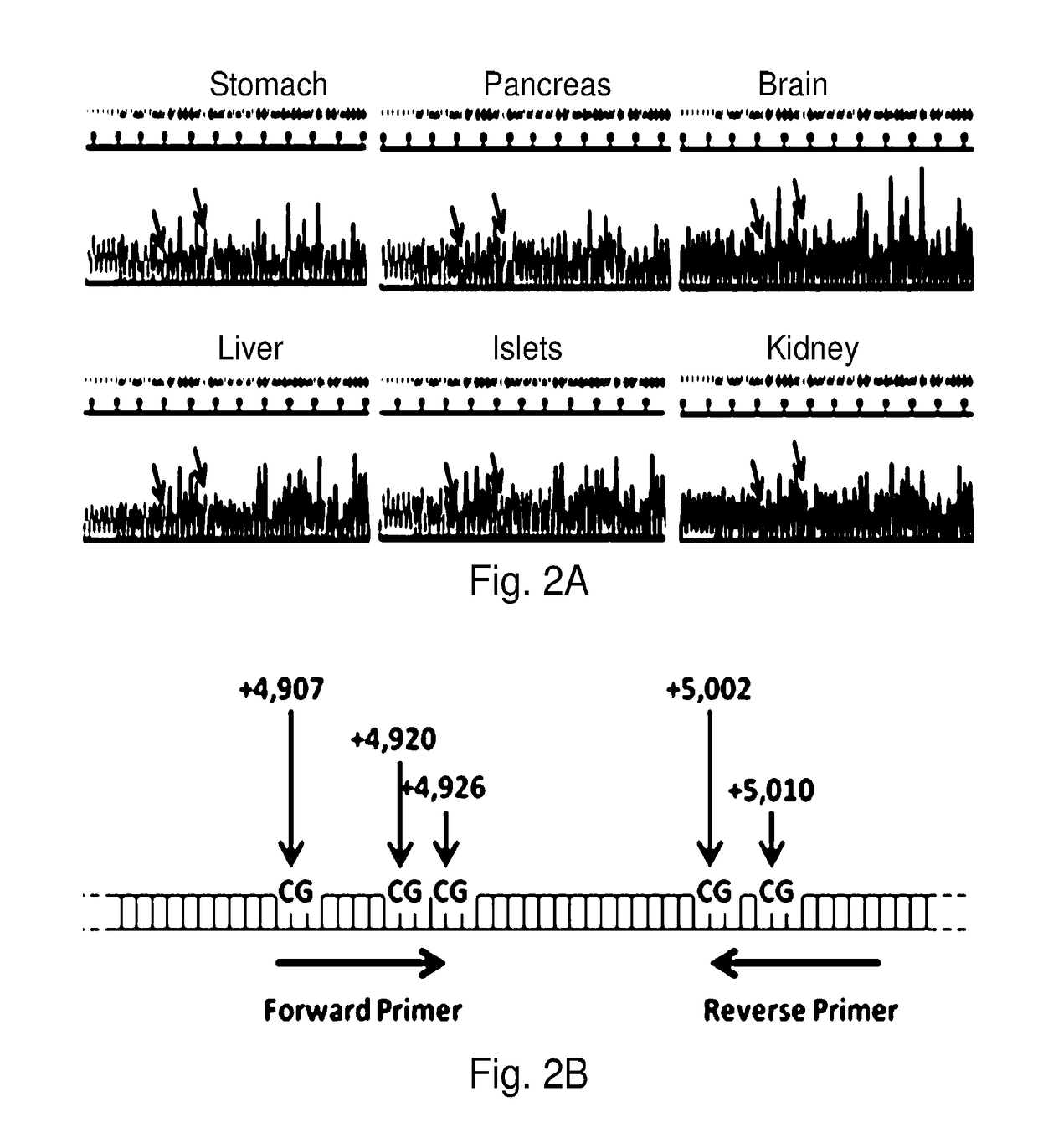System, method and kit for analysis of circulating differentially methylated DNA as a biomarker of beta-cell loss
- Summary
- Abstract
- Description
- Claims
- Application Information
AI Technical Summary
Benefits of technology
Problems solved by technology
Method used
Image
Examples
example 1
Experimental
[0124]Female NOD / LtJ mice were obtained pathogen-free from the Jackson Laboratory (Bar Harbor, Me.) and maintained under pathogen-free conditions. Eight-wk old NOD mice were screened for hyperglycemia every 2-4 wks and were diagnosed with diabetes when glucose levels >200 mg / dL were measured in whole blood from the tail vein using a Glucometer Elite XL (Bayer A.G., Whippany, N.J.). Blood for DMI analysis was collected by cheek pouch bleeding, thereby allow for monitoring of β-cell death in the same animal until the development of frank hyperglycemia. All animal use and husbandry protocols were approved by the Winthrop-University Hospital Institutional Animal Care and Use Committee.
[0125]Intraperitoneal glucose tolerance test (IPGTT) was done as previously described (Akirav (Diabetes 2011)). In brief, mice undergoing an IPGTT were fasted overnight and received a 2 g / kg intraperitoneal (i.p.) dextrose injection. Whole-blood glucose levels were measured from the tail vein a...
example 2
[0150]Methylation-Specific Analysis
[0151]As an alternate to use of qRTPCR, DNA probes may also be used to quantify the relationship between the demethylated (hypomethylated) DNA from β-cells, and methylated (hypermethylated) DNA from non-β-cell origin, from various sources, such as circulating DNA (serum), or DNA in saliva or urine, for example.
[0152]DNA from serum samples is purified using the Qiagen QIAamp DNA Blood Kit following the manufacturer-recommended protocol. Synthetic unmethylated and methylated DNA is available from Millipore. Purified DNA is quantitated using a NanoDrop 2000 spectrophotometer. As per Example 1, DNA is subjected to bisulfite treatment and purified on a
[0153]DNA binding column to remove excessive bisulfite reagent using the Zymo EZ DNA Methylation Kit, and then amplified using PCR. Bisulfite-treated DNA template was added to ZymoTaq™ Premix (see, www.zymoresearch.com / protein / enzymes / zymotaq-dna-polymerase) Using the forward and reverse primers, PCR is co...
PUM
| Property | Measurement | Unit |
|---|---|---|
| Fraction | aaaaa | aaaaa |
| Temperature | aaaaa | aaaaa |
| Temperature | aaaaa | aaaaa |
Abstract
Description
Claims
Application Information
 Login to View More
Login to View More - R&D
- Intellectual Property
- Life Sciences
- Materials
- Tech Scout
- Unparalleled Data Quality
- Higher Quality Content
- 60% Fewer Hallucinations
Browse by: Latest US Patents, China's latest patents, Technical Efficacy Thesaurus, Application Domain, Technology Topic, Popular Technical Reports.
© 2025 PatSnap. All rights reserved.Legal|Privacy policy|Modern Slavery Act Transparency Statement|Sitemap|About US| Contact US: help@patsnap.com



